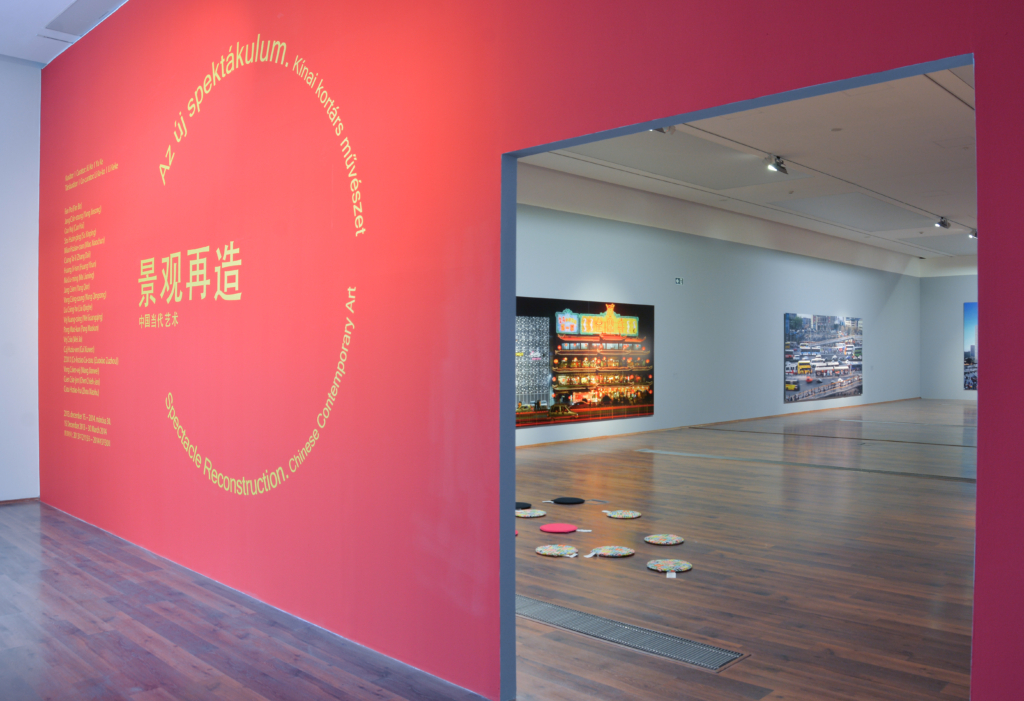Spectacle Reconstruction – Chinese Contemporary Art
2013. Dec. 15. - 2014. Mar. 30.

The works in the Spectale Reconstruction strongly reflected social, political and historical changes. Most of the exhibiting artists were born in the 1960s, so their childhood visual development coincided with the Cultural Revolution, and as young people they were already involved in the avant-garde movements of Teng Xiaoping’s opening-up. The art world was of course still under Party control at that time, but they had the opportunity to rebel. The so-called ‘art of scars’ dealt with the pain of the Cultural Revolution in a formally realistic way, but the more radical ones, who embraced Western avant-garde ideology, formed the Stars grouping in 1979, which included many now well-known artists. In 1985, the New Wave was formed and grew into a nationwide movement, and in February 1989 the famous China Avant-Garde (also known as the China Modern Art Exhibition) was held at the National Museum of Fine Arts in Beijing, the main venue for official art. The revolutionary atmosphere was also reflected in the many daring performances in Xiao Lu’s Dialogue. The firing of a pistol during the action was an incident in the history of Chinese politics and art: the young artist fired two shots at her own work of telephone boxes in the museum building. On the one hand, the Spectacle Reconstruction goes back to this avant-garde spirit, since Wei Guangqing, Ma Liuming, Wang Qianwei, Su Xinping were themselves important figures in the art scene of the 1980s. On the other hand, the exhibition gives space to a critique of contemporary consumer society, which has undergone a sometimes painful urbanisation, in photographs by artists such as Miao Xiaochun and Wang Qingsong. Chiang Ta-li, on the other hand, seeks to revisit the historical past with his collection of archival photographs documenting political games, juxtaposing original and manipulated propaganda images of Mao Zedong and the party elite. In addition to photographs, the exhibition includes oil paintings, ink drawings, powerful installations (such as Cao Huj’s armchair decorated with internal organs) and seven videos. Among the video works are a series of images of the best-known Chinese artist Cui Xiuwen, shot in the ladies’ room of a fashionable nightclub, and a video clip of Zuoxiao Zuzhou, in which the number one Chinese artist in the West, Ai Weiwei, sings and acts out the story of his own arrest and detention.
Curators: Yu Ke, Hornyik Sándor
Artists: Fan Po (Fan Bo), Jang Csin-szung (Yang Jinsong) , Cao Huj (Cao Hui), Szu Hszin-ping (Su Xinping), Miao Hsziao-csun (Miao Xiaochun), Csang Ta-li (Zhang Dali), Huang Ji-han (Huang Yihan), Ma Liu-ming (Ma Liuming), Jang Csien (Yang Qian), Vang Csing-szung (Wang Qingsong), Liu Csing-ho (Liu Qinghe), Vej Kuang-csing (Wei Guangqing), Pang Mao-kun (Pang Maokun), Vej Csia (Wei Jia), Cuj Hsziu-ven (Cui Xiuwen), ZOO X (Co-hsziao Cu-csou (Zuoxiao Zuzhou)),Vang Csien-vej (Wang Jianwei), Csen Csie-jen (Chen Chieh-Jen), Csou Hsziao-hu (Zhou Xiaohu)

